The "Square Mile" -- what Londoners call the financial district that sprung up over two millennium inside the area first girded by Roman walls -- today holds many beautiful (and ugly buildings). Here's two that are quite obvious on a wall-walk tour -- and completely different from each other.
First, something old (although not necessarily old by London standards). The immaculate building below is called Cutlers Hall because it was built in 1887 by the guild who create cutting instruments. It was their fifth hall, but not in this location. In fact, the site held the Royal College of Physicians building (and probably some of the cutlers' best customers.)
Prime among the beautiful ornamentation on this building is the terra-cotta frieze by Ruskinite Benjamin Creswick who served an apprenticeship as a knife-grinder but turned to sculpture instead. Here's two close-ups of some of the 35 figures on the frieze:
The figures depict the manufacturing steps in making cutlery: forging, grinding, creating handles, and fine sharpening. Note the forgers below:
|
Here's two more samples of the building's detailing: the sign (left) and the grille work on the entrance doors (right). German bombs destroyed nearly all of this area on December 29, 1940 -- but left standing this building and St. Paul's. Subsequent bombings did destroy the north wall but all was restored by 1951. |
Next is a much newer building we've mentioned before: 30 St Mary Axe, named after its historic address. Nicknamed "the Gherkin," it hovers over you as you walk the eastern route of the old Roman walls. So when I finished the wall walk, I had to visit. Here's two more photos taken near-by. The left with some older buildings in front of it, the right from its own plaza:
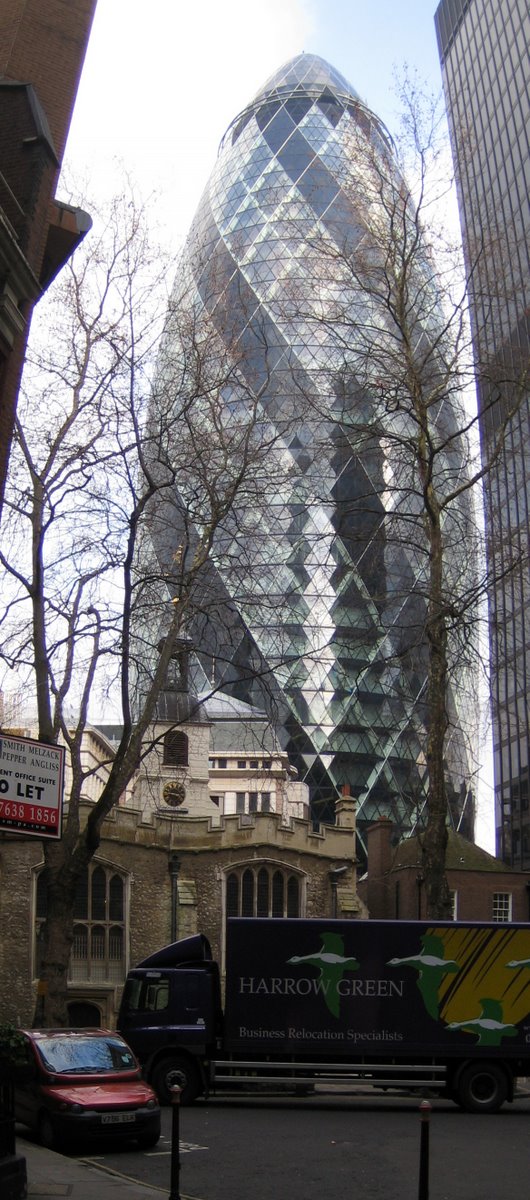 |
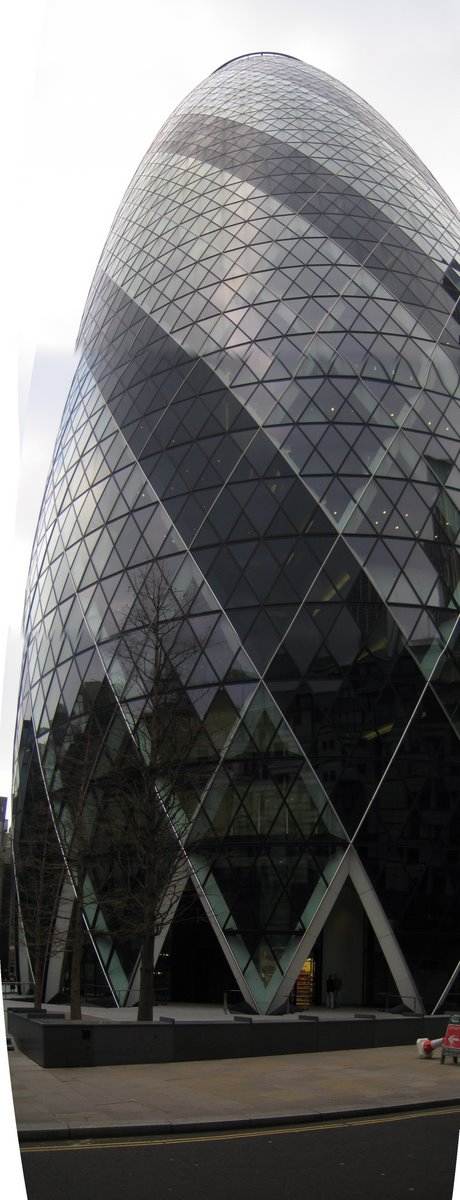 |
As the 2nd tallest building in town, the Gherkin is bound to loom over you as either an Orwellian eye or a glass guardian angel. You can get drawn to it a little like the Richard Dreyfuss character seeking Devils Tower rock in Close Encounters of the Third Kind.
Everywhere you turn, it seems, this building is just over your shoulder, starting when you emerge from the Underground at the Tower Hill station, innocently on your way to visit the oldest building in London.
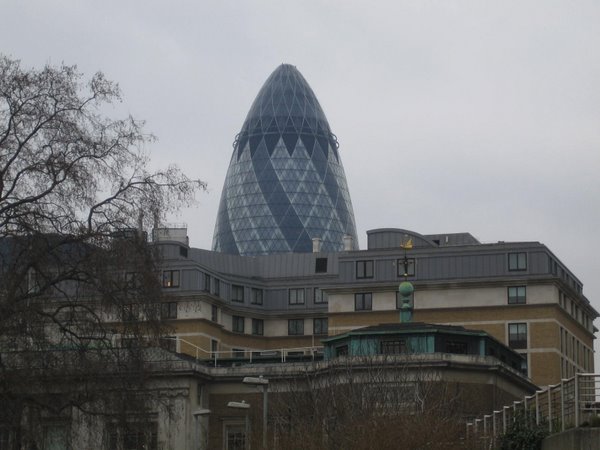 |
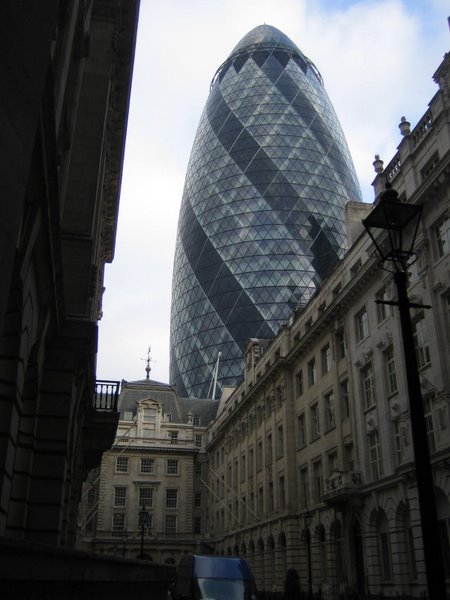 |
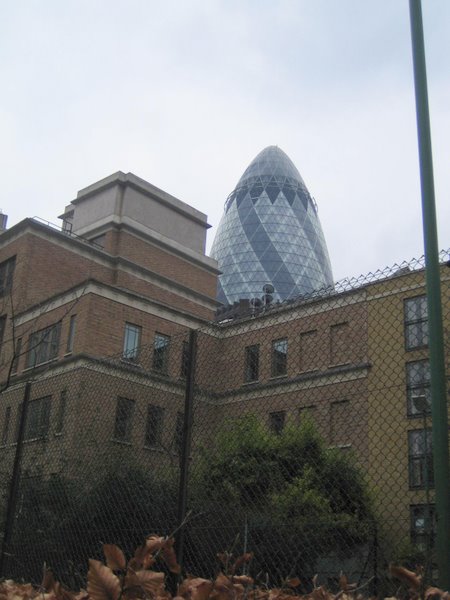 |
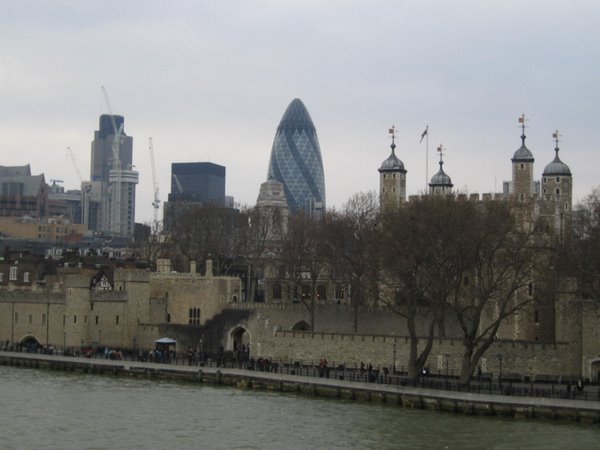
|
Distinguished by both its height and style, Norman Foster's energy-efficient building contrasts sharply not only with the medieval Tower of London and with neoclassic Christopher Wren churches that were the focus of our London Wall walk, but with even the modern buildings raising spiked high rises from the World War II-devastated Square Mile.
As such, 30 St. Mary Axe is but the latest manifestation of the work-in-progress called the City of London, a place formed not just by the demands of commerce, but by its continuously evolving set of enemies: The barbarians who wanted to level the Roman city of Londinium, the attacking Saxons who forced the walls to be reinforced, the Great Fire that gave the city the opportunity (squandered) to restructure the roads that now choke street traffic, the German blitz that leveled most of the Square Mile, the IRA which destroyed other buildings, including the historic Baltic Exchange where the Gherkin now rises. Will today's set of suicidal terrorists (who last summer blew up subway trains directly under this area) continue this destruction and force this gutsy city's rebirth? Going forward, how will we keep the barbarians out?
Haven't seen enough? then click here to visit another historic building that overlooks the Roman Walls and the Tower of London.
![]()
This work is licensed under a Creative
Commons Attribution-NonCommercial-NoDerivs 2.5 License.